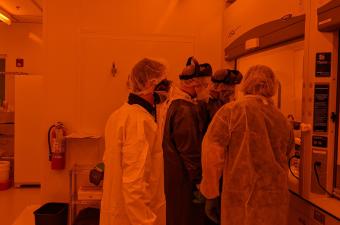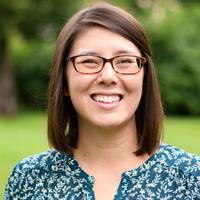Mines Quantum Engineering Program wins $3M NSF grant for graduate student training

Quantum information science and engineering could fundamentally reshape today’s leading technologies, from computing to communications to sensing.
But to fulfill that promise, a well-prepared workforce is essential.
Thanks to a $3 million grant from the National Science Foundation, Colorado School of Mines will take a leading role in that work.
The NSF Research Traineeship (NRT) funding will support Mines, along with partners at San Jose State University, in the development of rigorous, integrated and interdisciplinary training programs preparing both master’s and doctoral students for careers in the burgeoning field of quantum information science and engineering (QISE), whether that’s in industry, government, academia or national labs.
“This funding, along with our leadership in the development of a roadmap for quantum engineering education at the undergraduate level, really puts Mines on the map in quantum engineering,” said Lincoln Carr, professor of physics and principal investigator on the NSF grant. “We’re a leading voice for quantum engineering education in the nation right now.”
Mines launched one of the nation’s first quantum engineering programs at the graduate level in the Fall of 2020 with hands-on training on quantum hardware on campus and direct student access through the cloud to Google’s quantum computer. The program offers an undergraduate minor and graduate master’s degrees (thesis and non-thesis), with specialization tracks in quantum hardware and software, as well as professional upskilling via a graduate certificate for experienced engineers and scientists in industry. Doctorates in the quantum engineering program can be obtained in any of six departments on campus, who all contribute jointly to the program.
The NRT funding will allow Mines to grow that program at the same time as an interdisciplinary group of faculty work to address some of the broader challenges in training a quantum workforce. Focus areas include the creation of new training materials to introduce QISE basics to students from a wide variety of STEM disciplines, engagement with industrial and national lab partners to provide students access to cutting-edge technologies and research experiences, and the development of student recruitment and mentoring programs and diversity, inclusion and access training to ensure diversity within the QISE workforce.
The traineeship will also leverage a memorandum of understanding, created as part of Mines’ NSF Quantum Leap Challenge Institute Concept Grant, between Mines and San Jose State University, a Hispanic Serving Institution within the California State University System. The MOU provides opportunities for students to complete an MS/PhD bridge program from SJSU to Mines. Thanks to the NRT grant, students in SJSU’s new Quantum Science master’s program will be awarded a quantum fellowship to come to Mines for a semester or two, take classes in the Mines’ Quantum Engineering Program, and participate in quantum engineering research at Mines and nearby national labs.
Leading SJSU’s involvement in the quantum traineeship is Hilary Hurst, assistant professor in the Department of Physics and Astronomy. A Mines alumna, Hurst received her bachelor’s degree in engineering physics in 2012 before going on to her master’s studies at the University of Cambridge and a PhD in physics from the University of Maryland and the Joint Quantum Institute.
“Our goal is to create a template for quantum information science and engineering graduate education, which will be accessible to STEM students from all backgrounds and types of institutions, increasing diversity in QISE,” Hurst said.
As part of the traineeship, seed funding will be available for researchers at both institutions to develop new quantum ideas. To support that work and the hands-on training of students, the Mines team also plans to build out laboratories in each of the three main QISE disciplines – quantum computing, quantum communications and quantum sensing. Mines faculty from the Departments of Computer Science (Bo Wu), Electrical Engineering (Peter Aaen), Metallurgical & Materials Engineering (Geoff Brennecka), and Physics (Meenakshi Singh) are co-principal investigators involved in the traineeship, with yearly rotating leadership between departments.
“Quantum technologies are poised to revolutionize how we compute, communicate and sense and this requires engineers that have an interdisciplinary education,” said Peter Aaen, department head and professor of electrical engineering. “This grant will allow unique training opportunities and our graduates will be well positioned to support the growth of quantum industries.”
As part of the grant, four national labs will also provide quantum research opportunities for Mines and SJSU students: Lawrence Livermore National Laboratory, National Renewable Energy Laboratory (NREL), National Institute of Standards and Technology (NIST), and Sandia National Laboratory.




